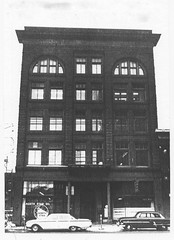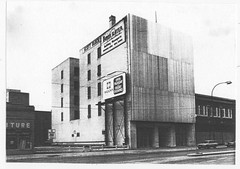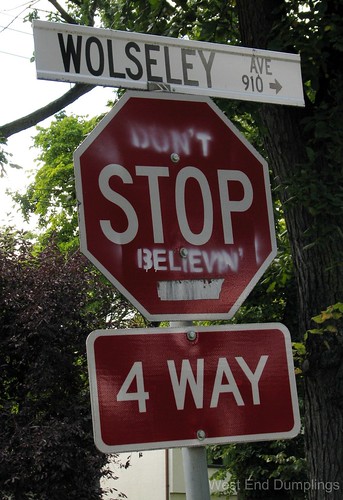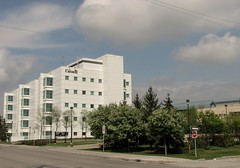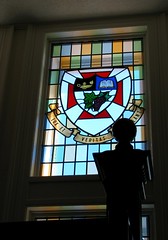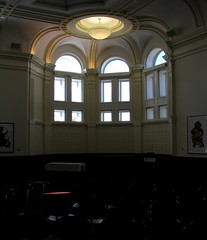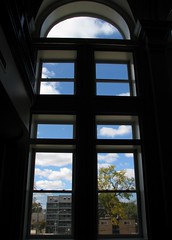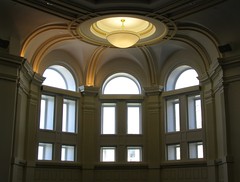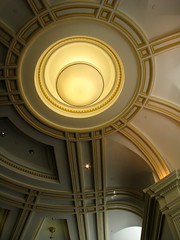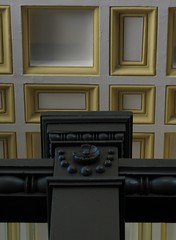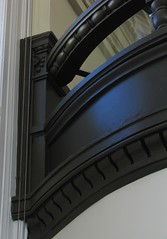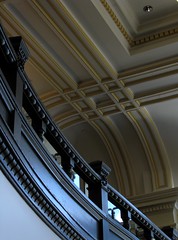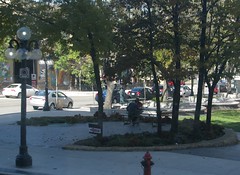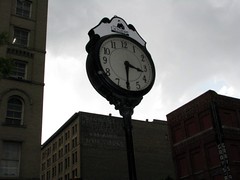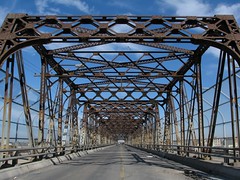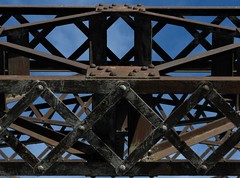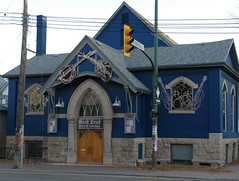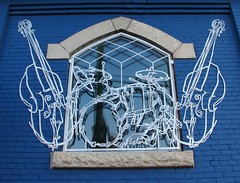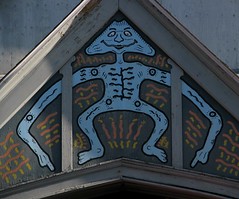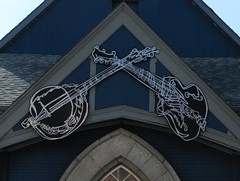 |
| The Voice, 1906
The earliest mention of formal Halloween events taking place in Manitoba can be found in the November 1, 1882 Winnipeg Daily Sun. It was a festival of the Scots and usually meant a concert and dinner put on by the likes of the St. Andrews Society. By the mid 30s and through the 40s these intimate gatherings became mainstream and a multi-day Scottish Halloween Carnival was held at the Winnipeg Auditorium.
Hallowe'en as a night for 'boyish pranks' seems to come about much earlier. The Manitoba Free Press of October 31, 1874 reminded readers that "prudent people are taking in their cabbages" lest they go missing that evening.
|
Boyish pranks, though, could get out of hand.
In 1901 the Morning Telegram, in an editorial called Halloween Excesses, detailed some of the Halloween night damage done in the city. Windows were broken, gates ripped off of hinges and other 'vicious depredations upon property'. They called on Winnipeg to look at what Minneapolis did that year, an evening curfew for boys on October 31st. (Though I believe the Minneapolis curfew had to do with the killing of a streetcar driver by a gang of kids).
In 1901 the Morning Telegram, in an editorial called Halloween Excesses, detailed some of the Halloween night damage done in the city. Windows were broken, gates ripped off of hinges and other 'vicious depredations upon property'. They called on Winnipeg to look at what Minneapolis did that year, an evening curfew for boys on October 31st. (Though I believe the Minneapolis curfew had to do with the killing of a streetcar driver by a gang of kids).
 |
| Manitoba Free Press, Nov. 5 1901 |
A few hooligans were caught for the 1901 actions and went before the courts. Fourteen year-old Harold Hutchings, however, was able to turn the tables on an adult, (see above).
Through the decades, the major Halloween pranks remained broken windows, gates ripped off hinges and hay piles set on fire. Pranksters did keep up with new technologies such as opening fire hydrants and calling in false alarms to the fire department.
 |
| Minnedosa Tribune, Oct 22, 1922 (source) |
Halloween during he Depression was a low key affair. Money for peanuts and apples was simply not there and communities and charitable organizations held central parties, such as the Scottish one mentioned above.
After the Depression and before the war, Halloween was back. Many of the pranks were the same, there were just more people out doing them. The police began the practice of hiring 'specials' to complement the existing force (also).
 |
| Some 'culturally insensitive', winning costumes of 1939 (source) |
In 1939 Winnipeg's shenanigans included the usual false alarms and broken windows plus what would have been the odd site of youths riding horses up and down the sidewalks of Luxton Avenue. That year was particularly bad in Brandon. Youths barricaded streets, cut power lines and rearranged boxcars on the tracks.
November 2, 1942, Winnipeg Tribune
World War II would again put a damper on Halloween. Some communities called 'Halloween truces', either not going out or collecting spare change to go toward Christmas packages for the troops rather than candy and apples. Killarney called theirs a "Shell Out".
November 1, 1940 and 1941, Winnipeg Tribune
November 2, 1942 and November 1, 1944, Winnipeg Tribune
In Winnipeg, though, the tradition carried on through the war. In 1940 and 1941 the weather played havoc. By 1942, things were back on track.
October 29 and November 1, 1946, Winnipeg Tribune
In 1946 there was a chilling warning form police for boys to travel in groups after two boy scouts had been murdered earlier that year and was still at large. That year was one of the worst for vandalism in a decade.
Compared to other cities that had riots, murders and shootings, Halloween in Manitoba has been a pretty calm affair !
Have a safe and happy Halloween ! (Especially you, Mr. Gunnarson !)
P.S. whatever happened to Harry the Halloween Moose ?!


















